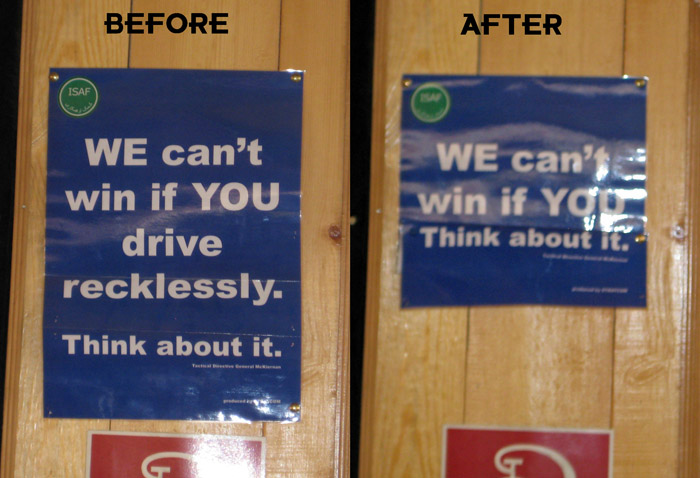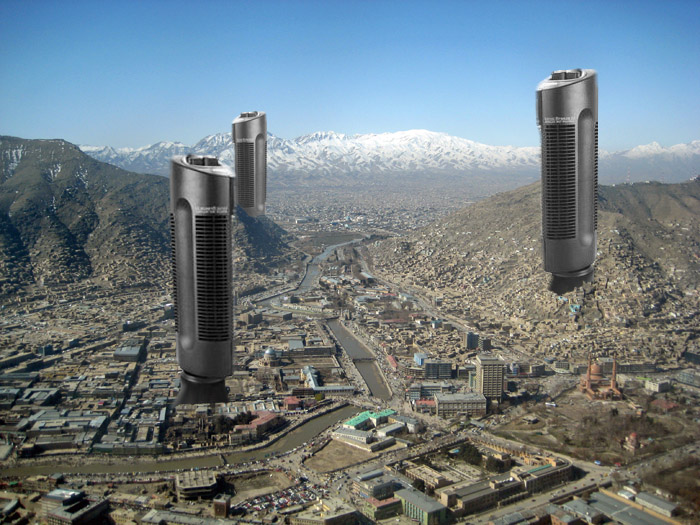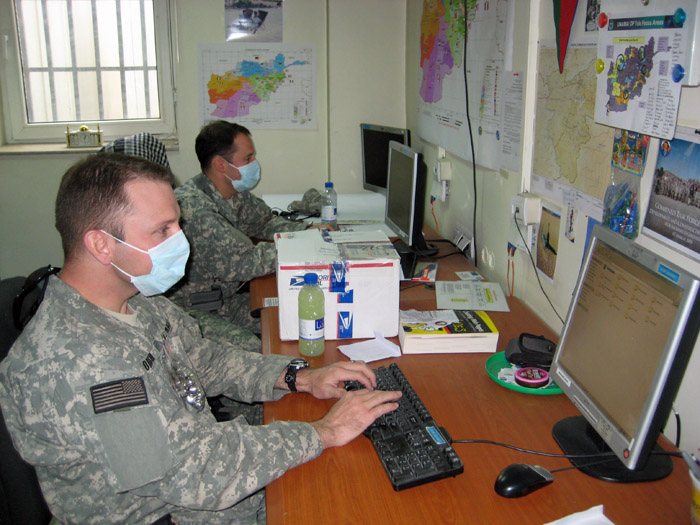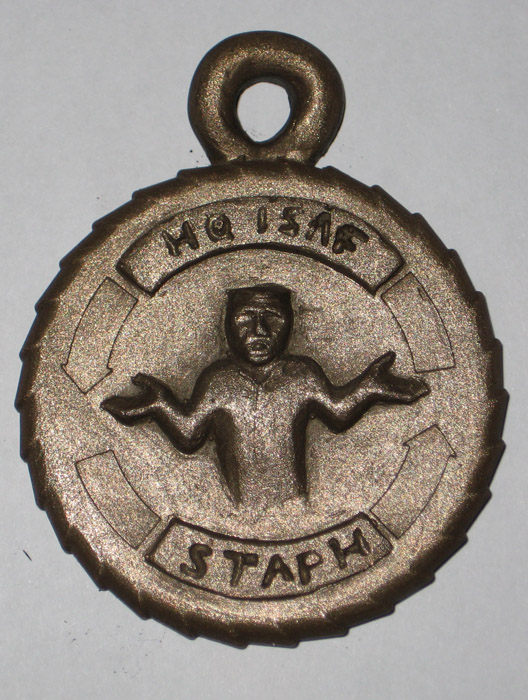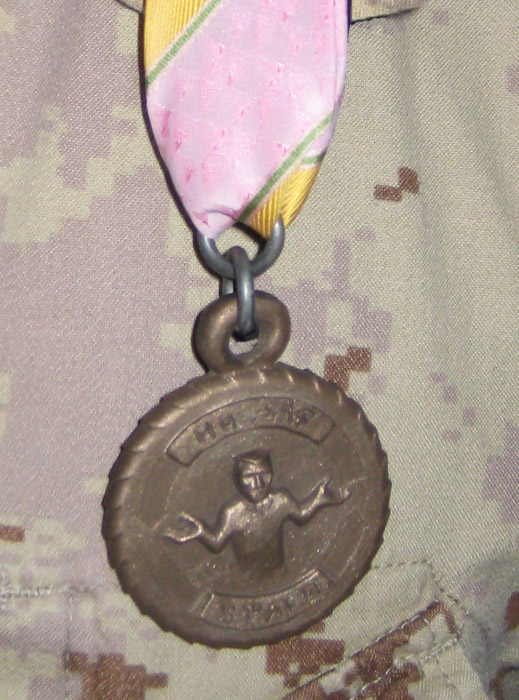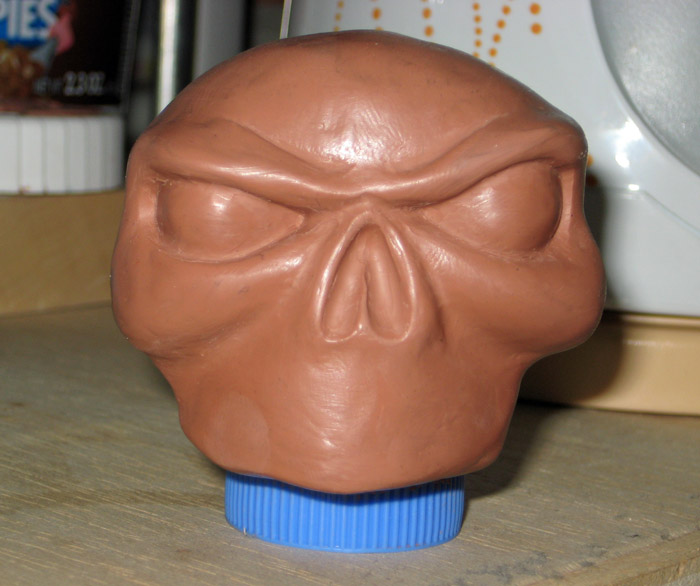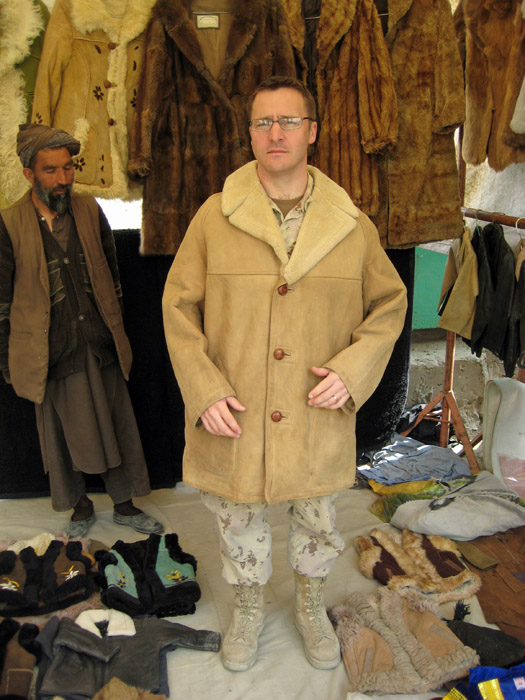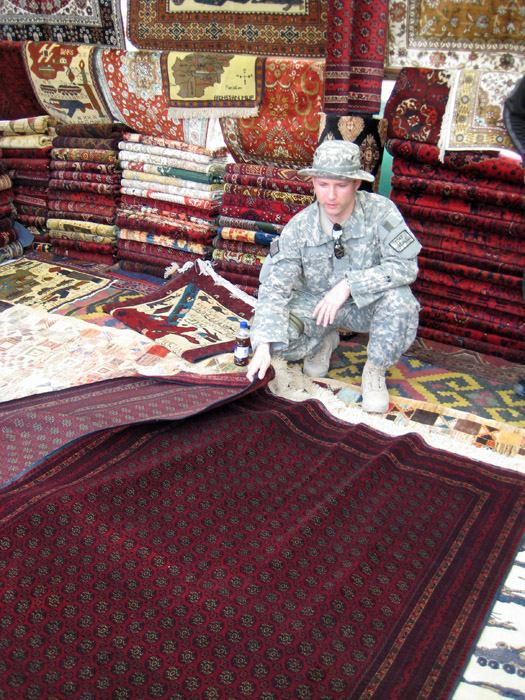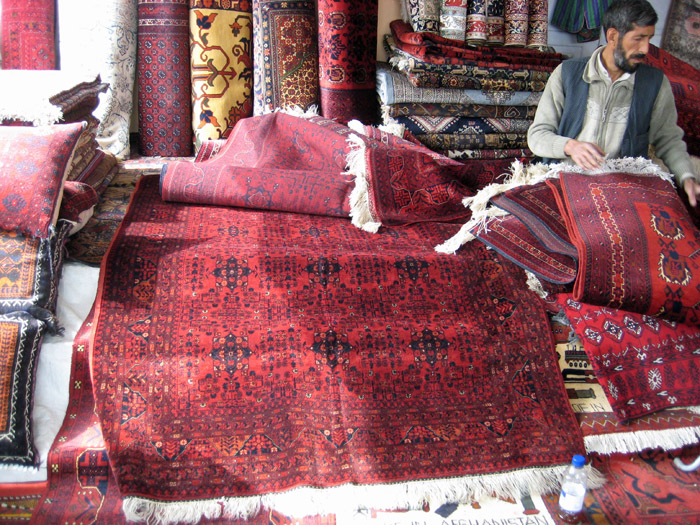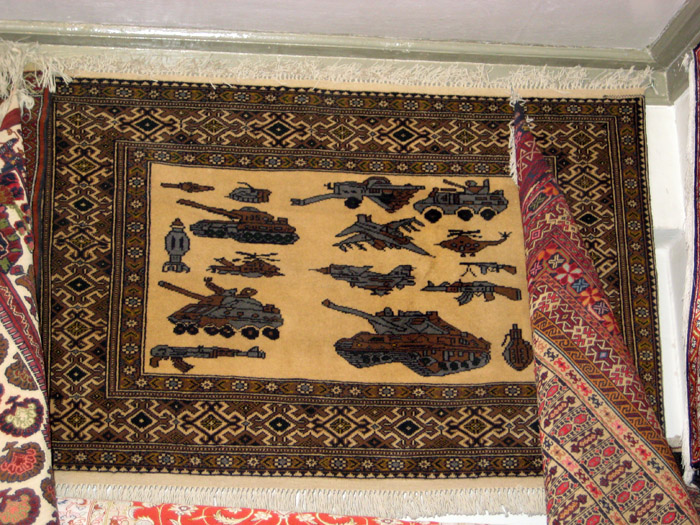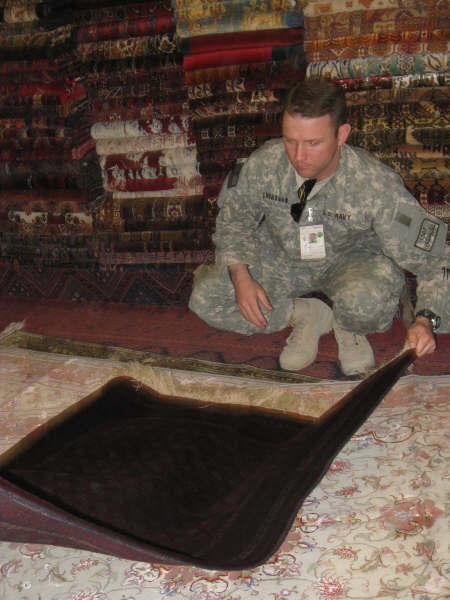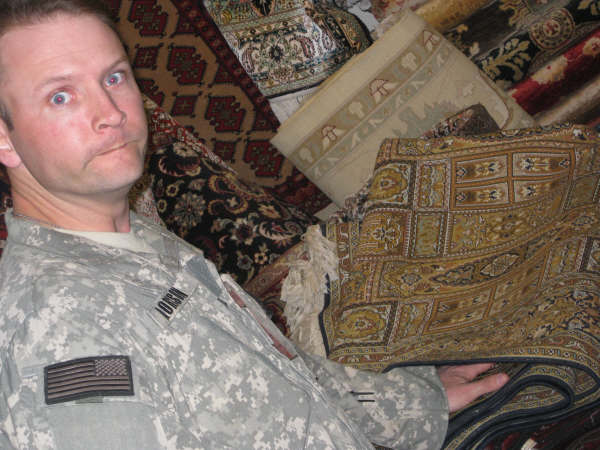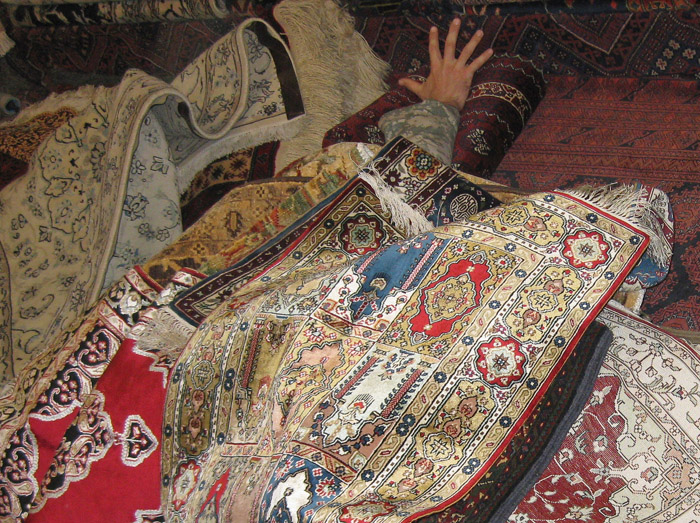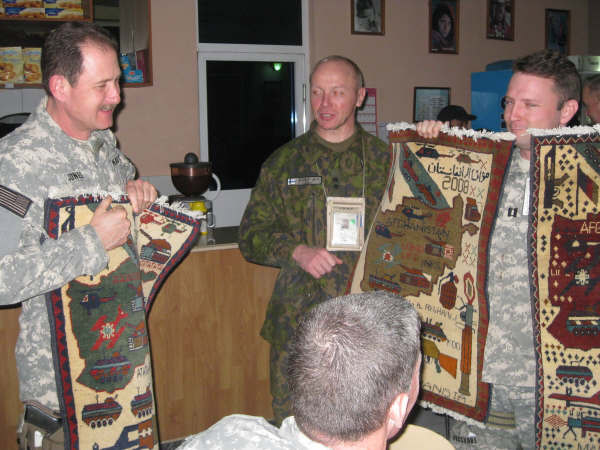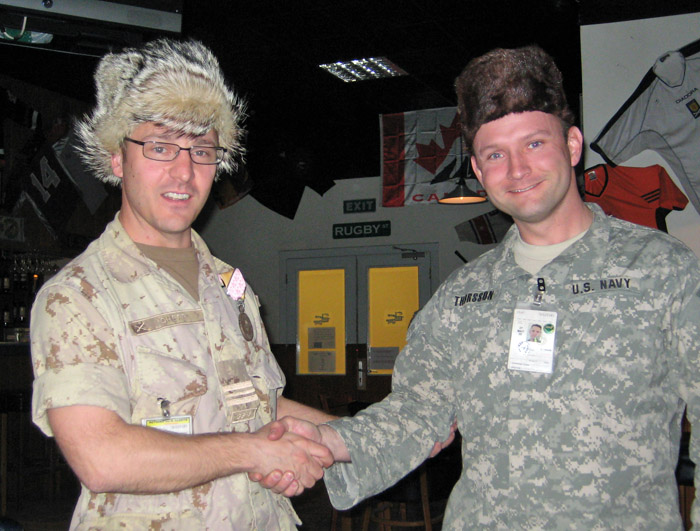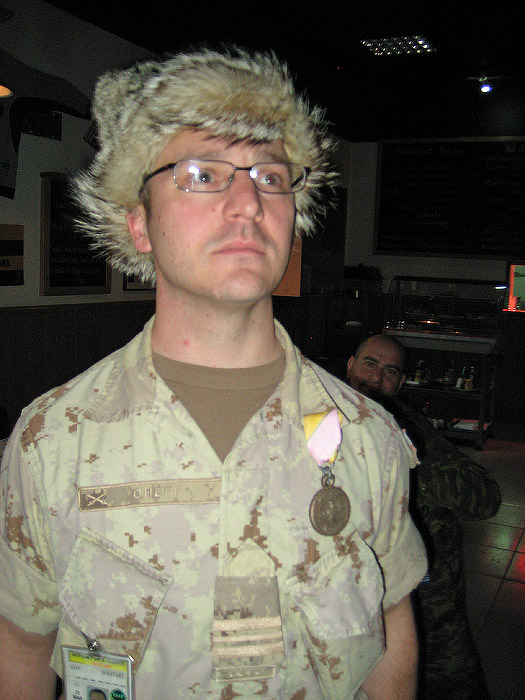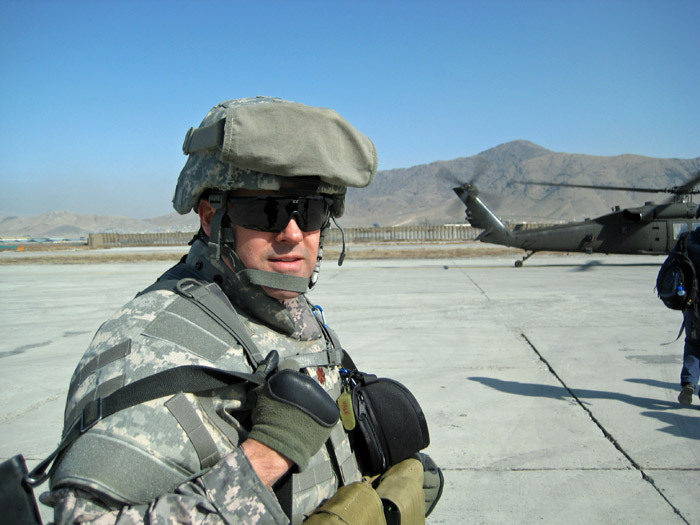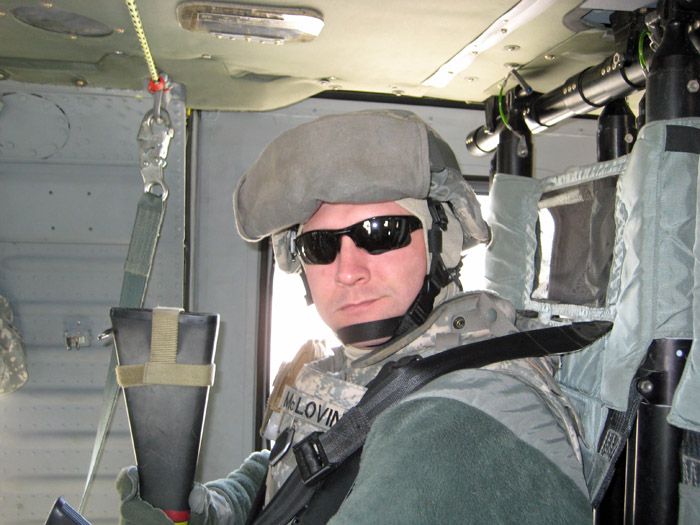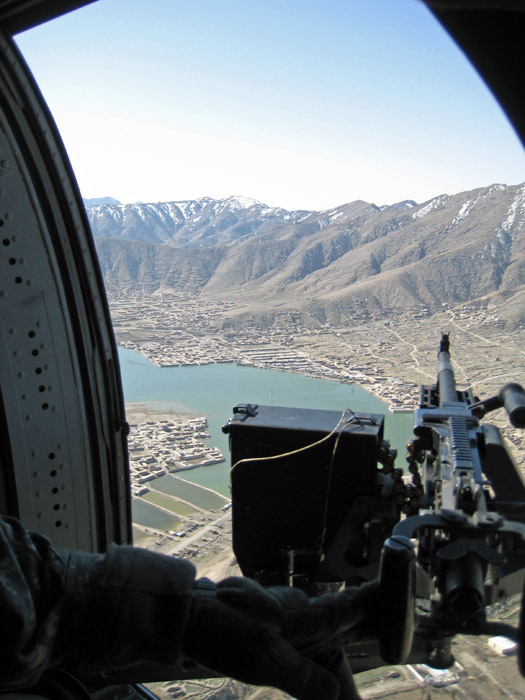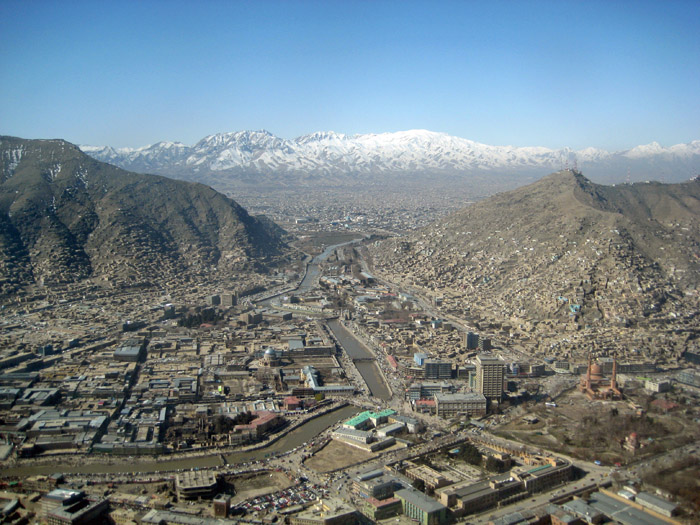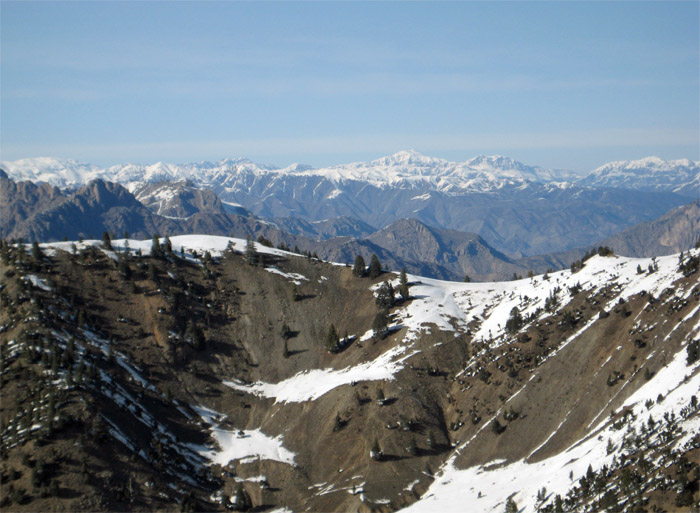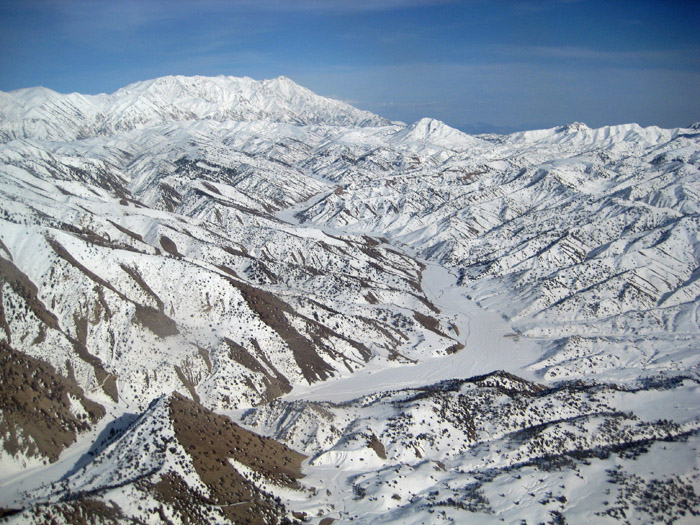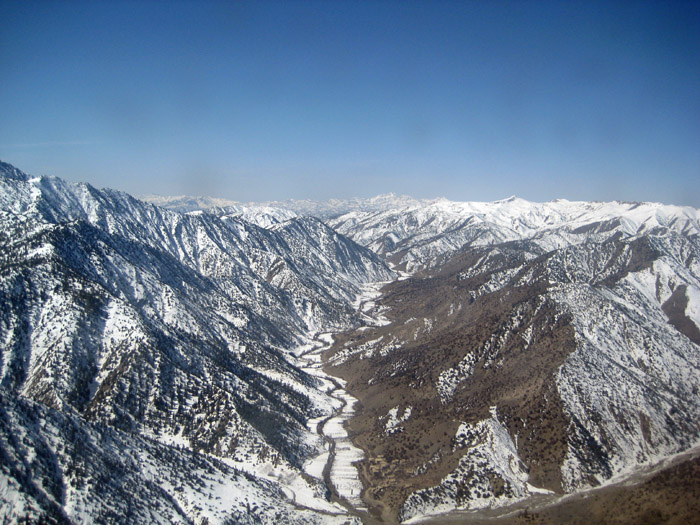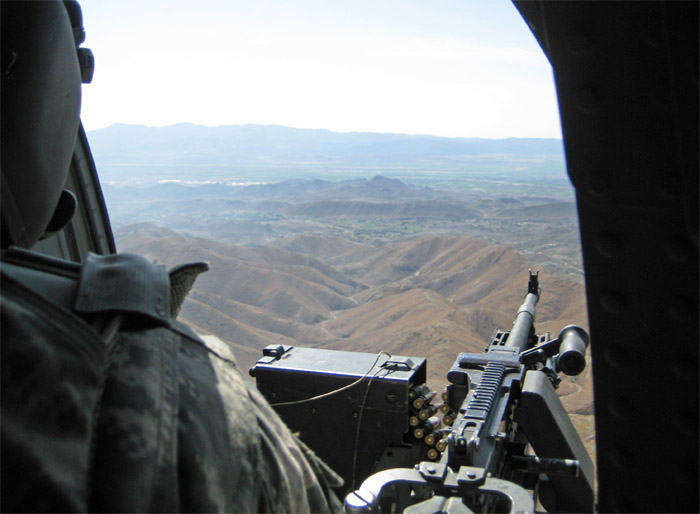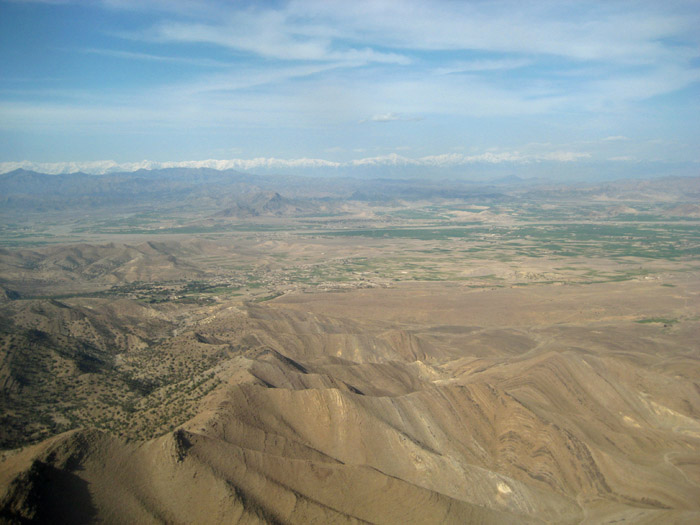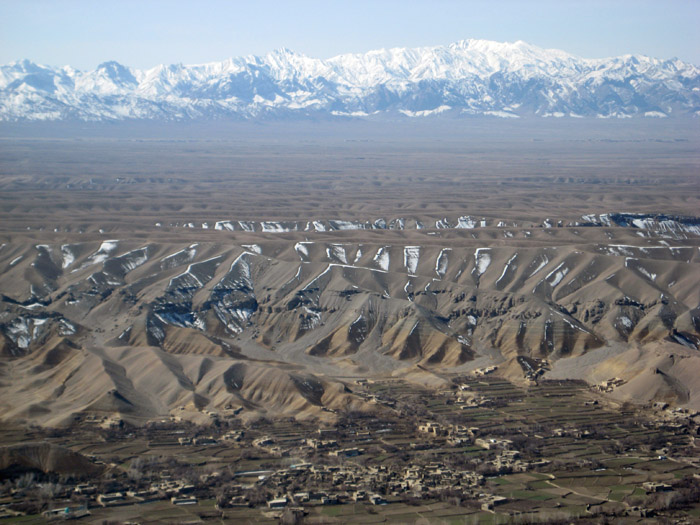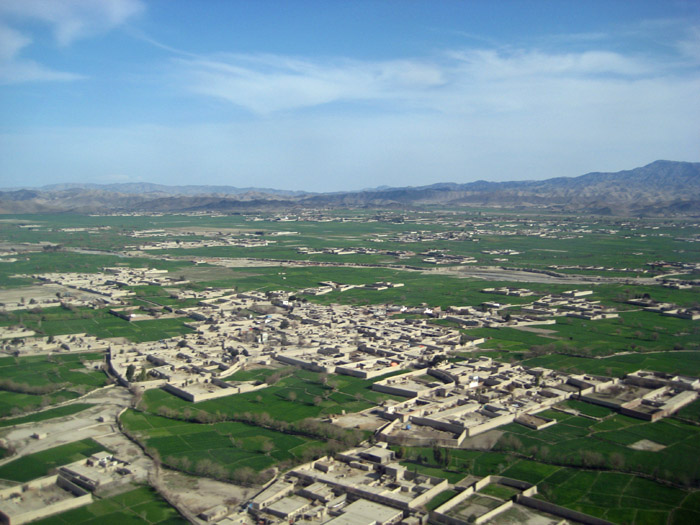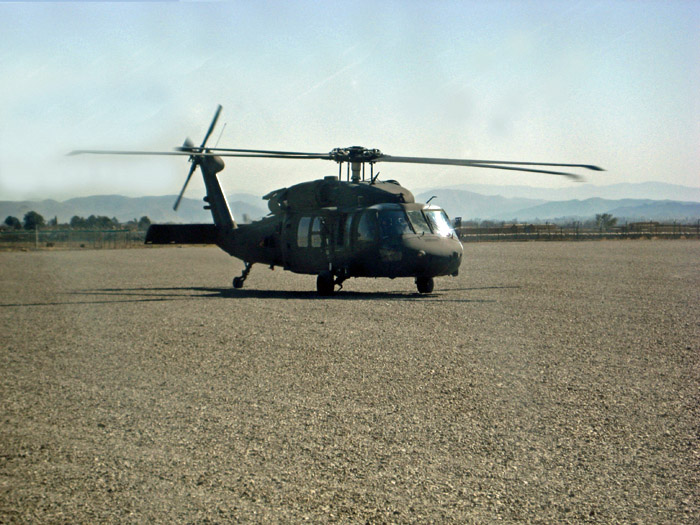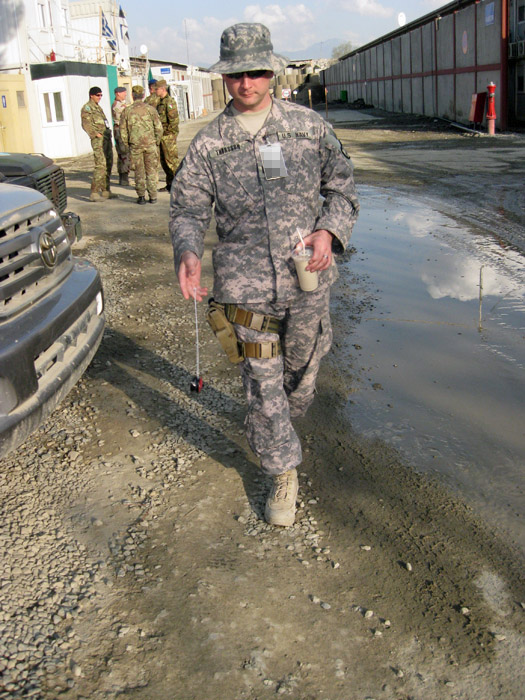
For quite a while now I've been meaning to post a handful of photos from daily life around the headquarters. I have failed. So without any further apologies, here they are.
First, here's a shot of me sipping tea at one of the carpet shops on base:

This just happened to be the same day that a bunch of the other guys from the office were carpet shopping too (the guy all the way on the left is Mires, one of the shop's owners):

Once we were done there, I went on to try on some new battle armor:
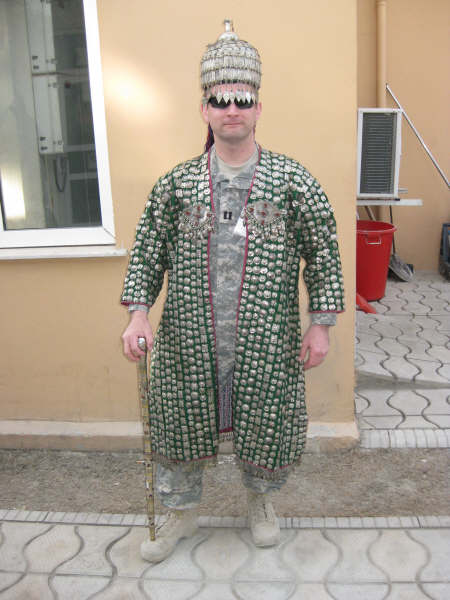
You've heard of Alexander the Great? I'm Shawn the Pretty Good.

Of course, I prefer my own rig:
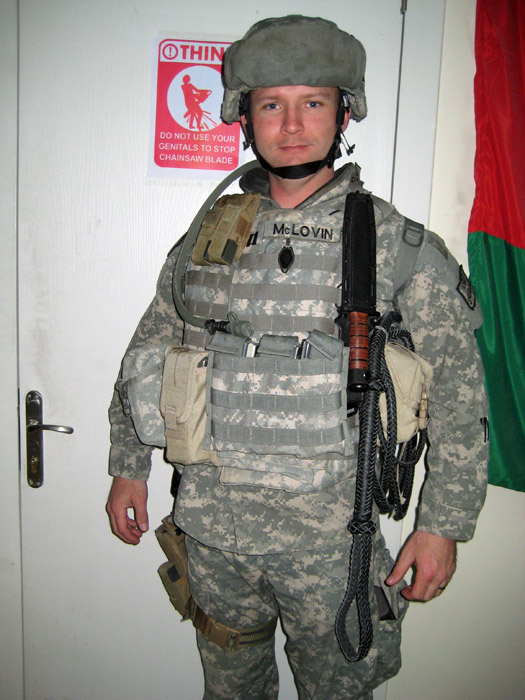
Here you can see me wearing my usual, ponderous Individual Body Armor with an attached Camelbak hydration system. The rest of the items pictured were my own personal add-ons acquired over the course of my tour so far. Just so you know, the "McLovin" nametape is designed to confuse any potential enemy who is trying to target me personally. It's hard to tell from the picture, but I'm also carrying 60 rounds of 9mm ammunition, 150 5.56mm rounds, two digital cameras, a handheld GPS, a personal locator beacon, a strobe light, a Sharpie, three knives (in addition to the Ka-Bar fighting knife strapped to the left side of my chest), two flashlights, a grappling hook, three Powerbars, and some Kool-aid mix. I added the bullwhip in case I find myself in a subterranean passage and need to swing from an overhead beam in order to escape being crushed by a giant stone ball rolling behind me.
Speaking of changing the subject, I posted the warning sign in the background of the above photo. This was mostly to mock the overwhelming abundance of warning signs found around the base.
Here's me next to Warning Sign #29947:

This is me heeding that warning sign behind our State Dept. representative:
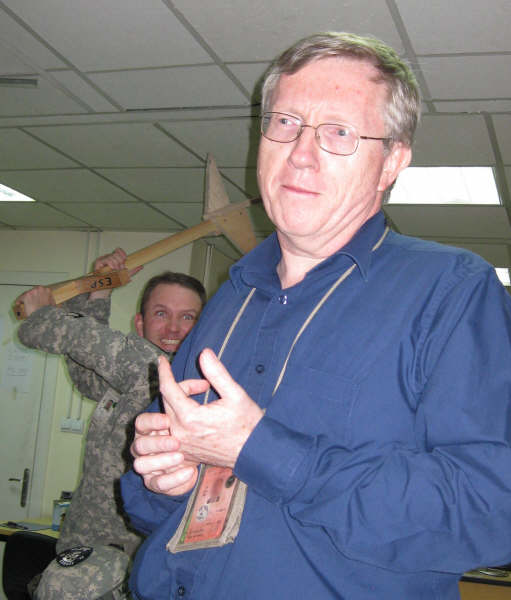
I can't tell you exactly what happened next, but the cleanup took a while.
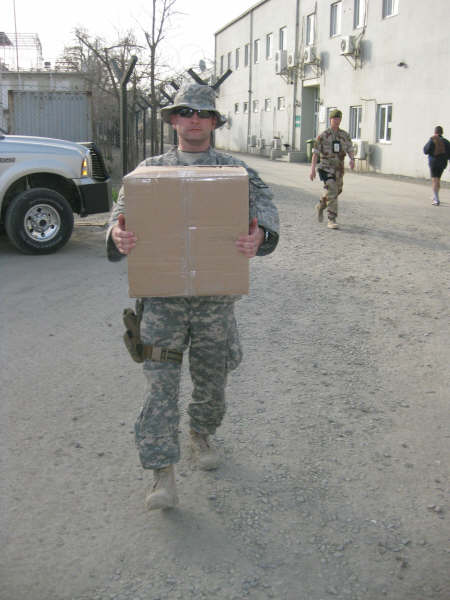
In other news, everybody assumes you're busy when you walk around with a big box.
I apologize if this post is a bit boring. There's been a shortage of inspiring views around here. I spent a day trying to take pretty pictures and this is the best I could manage:

The next day I got a better picture though. This is the headquarters building on a day when all of the flags were at full staff:

We need more days like this.
Next up, a fun and exciting trip all over Bamian, Parwan, and Kapisa Provinces. Stay tuned...

